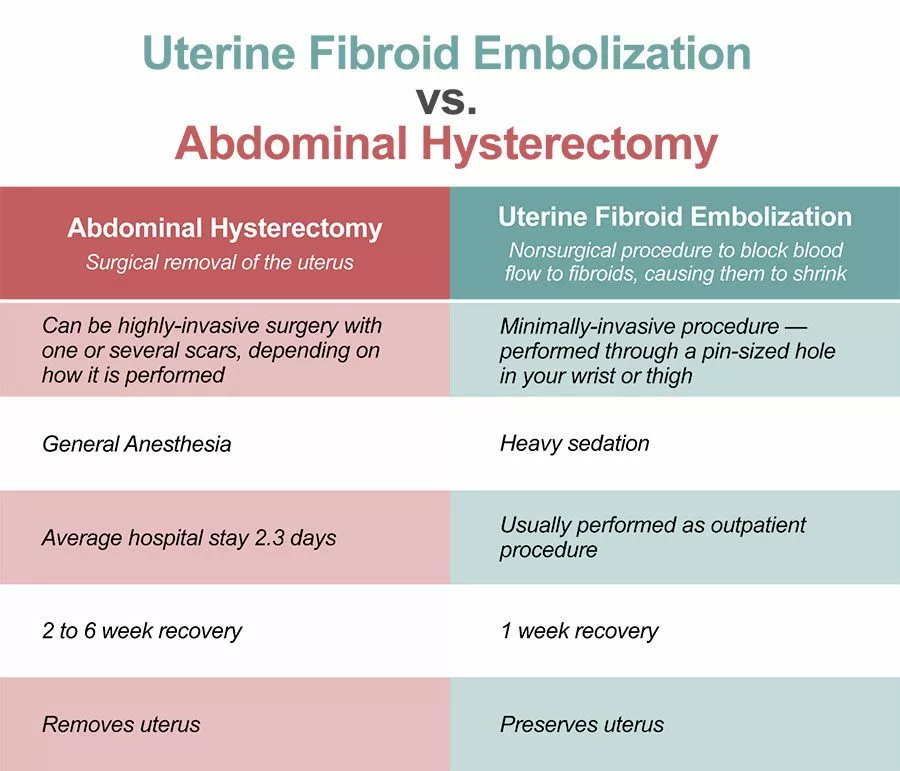Minimally Invasive procedure performed at our center in an outpatient setting.
Numerous treatment options exist for fibroids. These range from conservative to invasive. At Fairfax Vascular Center, we feel that our patients should be informed of all treatment options. Understanding what is available, the risks and benefits will enable you to make the correct choice for your own symptoms and lifestyle.
We treat fibroids with a minimally invasive procedure where a tiny nick is made in the groin area or wrist. Using a specialized X-ray, a catheter is guided through the uterine artery near the location of the fibroid. Then, embolic material (particles) is injected through the catheter blocking the blood flow to the fibroids causing them to shrink.




